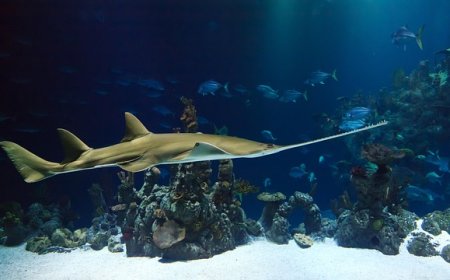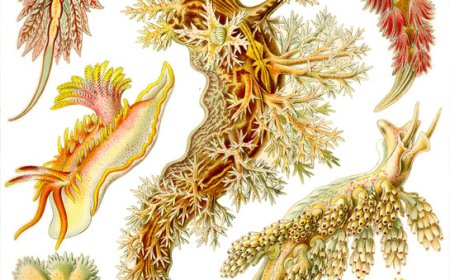Narwhal Facts for Kids – Unicorns of the Arctic Ocean
Learn about narwhals for kids. Discover why narwhals have long tusks, where they swim, and fun facts about these amazing Arctic whales.
🦄🐋 Narwhals: Unicorns of the Arctic Ocean
Narwhals are one of the most mysterious and magical-looking animals in the ocean. Nicknamed the “unicorns of the sea,” they are known for the long, spiral tusk that grows from the heads of most males—and sometimes females. But this “horn” isn’t a horn at all—it’s actually a tooth that can grow up to 10 feet long!
Narwhals live in some of the coldest waters on Earth—the Arctic Ocean. They belong to the group of marine mammals called toothed whales, which also includes dolphins and orcas. Although they live in remote places and are hard to study, scientists are learning more about their behavior, biology, and the challenges they face in a changing climate.
🌍 Habitat and Geographic Range
Narwhals live year-round in the Arctic, particularly around:
Canada (Nunavut and Hudson Bay)
Greenland
Norway (Svalbard)
Russia
They prefer deep, icy waters along coastlines, fjords, and inlets. In winter, narwhals live under thick sea ice, breathing through small cracks called leads. In summer, they migrate to coastal bays and open water where food is more available.
Narwhals are specially adapted for cold water and rarely leave the Arctic, making them one of the most ice-dependent marine mammals.
🦷 The Narwhal Tusk: What Is It?
The narwhal’s tusk is its most famous feature. It is actually a long, spiral-shaped tooth that grows straight through the upper lip of most males. About 1 in 500 females also grows a tusk.
Interesting facts about the tusk:
It can grow up to 10 feet (3 meters) long
It has millions of nerve endings, making it highly sensitive
It may help with communication, sensing the environment, or attracting mates
Narwhals sometimes rub tusks together, a behavior called "tusking"
Scientists once believed narwhals used their tusks for fighting or breaking ice. Now, it’s thought to be more like a multi-purpose sensory tool and social display.
🐟 Diet and Feeding Behavior
Narwhals are carnivores and dive deep to hunt for food. Their diet includes:
Greenland halibut
Arctic cod
Squid
Shrimp and other small sea creatures
They are deep divers—some of the best in the animal kingdom! Narwhals can:
Dive over 5,000 feet (1,500 meters)
Stay underwater for up to 25 minutes
Make several dives each day to reach the ocean floor
Narwhals use echolocation—clicking sounds that bounce off objects—to find prey in the dark, cold depths of the Arctic sea.
🧥 Adaptations for Arctic Life
Narwhals are built to survive in freezing Arctic waters. Their special adaptations include:
A thick layer of blubber (up to 4 inches) for insulation and energy
A streamlined shape for easy swimming under ice
Small, rounded flippers that help them navigate narrow cracks in the ice
The ability to slow their heart rate during deep dives
Unlike most whales, narwhals have no dorsal fin. This helps them move easily under sea ice without getting stuck.
👥 Social Life and Communication
Narwhals are social animals and travel in groups called pods, usually made up of 5 to 20 individuals, but sometimes up to 100.
They communicate using:
Clicks, whistles, and squeals (echolocation sounds and calls)
Body language, such as swimming close together
Tusk touching, possibly as a way of bonding or displaying dominance
Pod members often swim, dive, and surface in perfect coordination. Mothers are especially attentive to their calves, swimming side-by-side and guiding them through ice-covered waters.
🍼 Life Cycle and Reproduction
Narwhals give birth in early summer after a 14-month pregnancy. Calves:
Are about 5 feet long and weigh about 175 pounds at birth
Nurse for up to 20 months
Stay close to their mothers for safety and feeding
Narwhals reach maturity at 6–9 years old. Males can live to about 50 years, and females may live even longer.
Because narwhals live in remote areas and reproduce slowly, scientists are still discovering new details about their life cycle and family structure.
⚠️ Threats and Conservation
Narwhals face several threats in today’s changing Arctic environment.
🚨 Main threats include:
Climate change, which melts the sea ice they depend on
Noise pollution from ships and oil exploration, which affects echolocation
Oil spills and habitat disturbance from drilling
Hunting—though some Indigenous communities legally hunt narwhals for traditional purposes
Entanglement in fishing gear
Narwhals are currently listed as “Near Threatened” by the IUCN. Their populations are hard to count, but they are thought to number around 80,000 worldwide.
🛡️ Conservation actions:
Arctic research and monitoring programs
Protecting key narwhal habitats
Working with Indigenous communities on sustainable practices
Climate change solutions to preserve the Arctic ecosystem
🎉 Fun Facts About Narwhals
The narwhal’s tusk grows through its lip like a unicorn’s horn
Narwhals are known to dive deeper than almost any other marine mammal
They have no teeth in their mouths, just the tusk and a few vestigial teeth
Narwhals can change the pitch of their calls to communicate
Ancient sailors believed narwhal tusks were magic unicorn horns and sold them as treasures!
🧠 Vocabulary List
Tusk – A long, tooth-like structure found in some animals
Echolocation – Using sound waves to locate objects
Pod – A group of whales or dolphins
Blubber – A thick layer of fat that insulates marine mammals
Adaptation – A trait that helps an animal survive in its environment
Dorsal fin – A fin on the back of many marine animals (narwhals don’t have one)
Fjord – A narrow ocean inlet surrounded by cliffs
Vestigial – Leftover parts from evolution that no longer have a clear function
Leads – Cracks in sea ice where animals surface to breathe
Near Threatened – A conservation status meaning an animal is at risk
🧒 Kid-Friendly Summary
Narwhals are amazing Arctic whales with long, twisty tusks that look like a unicorn’s horn! They live in cold, icy waters and use echolocation to find fish and squid deep in the ocean.
Narwhals are shy and live far away from people, but scientists are learning more about them every year. They’re in danger from melting sea ice and ocean noise, but people are working to protect them and keep the Arctic safe.



















































